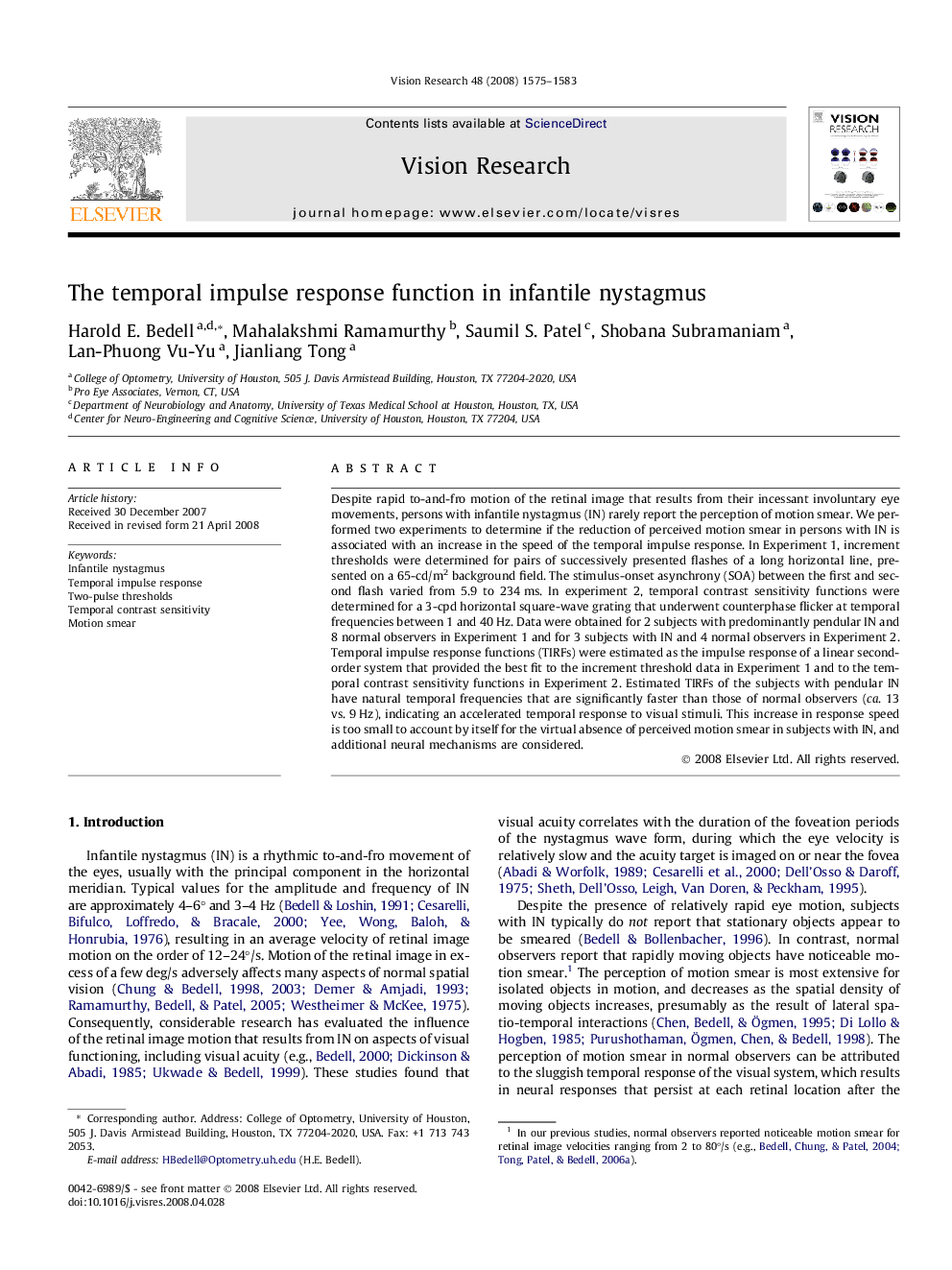| Article ID | Journal | Published Year | Pages | File Type |
|---|---|---|---|---|
| 4035028 | Vision Research | 2008 | 9 Pages |
Despite rapid to-and-fro motion of the retinal image that results from their incessant involuntary eye movements, persons with infantile nystagmus (IN) rarely report the perception of motion smear. We performed two experiments to determine if the reduction of perceived motion smear in persons with IN is associated with an increase in the speed of the temporal impulse response. In Experiment 1, increment thresholds were determined for pairs of successively presented flashes of a long horizontal line, presented on a 65-cd/m2 background field. The stimulus-onset asynchrony (SOA) between the first and second flash varied from 5.9 to 234 ms. In experiment 2, temporal contrast sensitivity functions were determined for a 3-cpd horizontal square-wave grating that underwent counterphase flicker at temporal frequencies between 1 and 40 Hz. Data were obtained for 2 subjects with predominantly pendular IN and 8 normal observers in Experiment 1 and for 3 subjects with IN and 4 normal observers in Experiment 2. Temporal impulse response functions (TIRFs) were estimated as the impulse response of a linear second-order system that provided the best fit to the increment threshold data in Experiment 1 and to the temporal contrast sensitivity functions in Experiment 2. Estimated TIRFs of the subjects with pendular IN have natural temporal frequencies that are significantly faster than those of normal observers (ca. 13 vs. 9 Hz), indicating an accelerated temporal response to visual stimuli. This increase in response speed is too small to account by itself for the virtual absence of perceived motion smear in subjects with IN, and additional neural mechanisms are considered.
